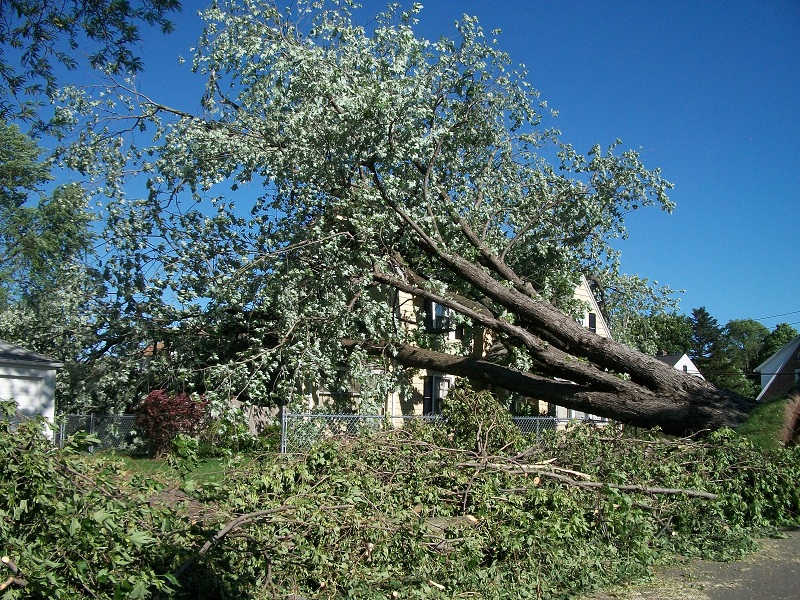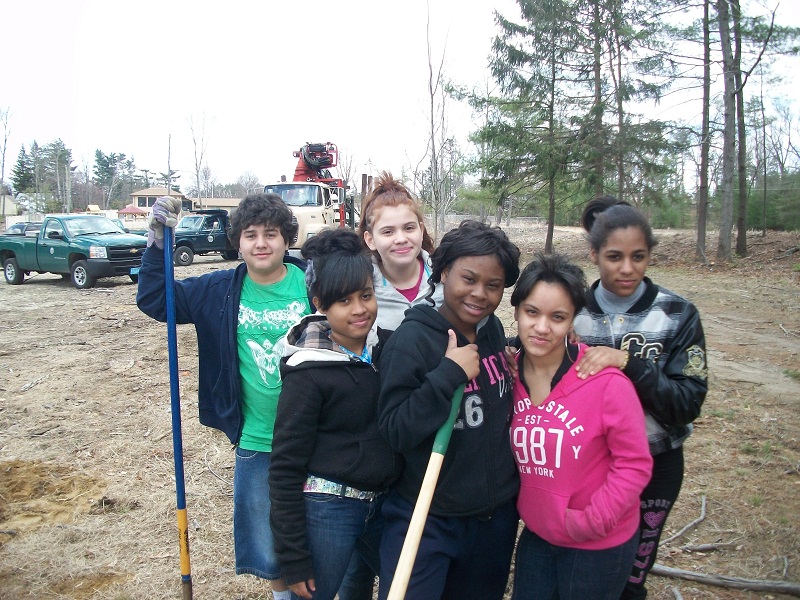|
|
Contextual Learning Portal The TREE (Together Reviving Everyone`s Environment) Project
Basics- Project TitleThe TREE (Together Reviving Everyone`s Environment) Project
- ThemePlant trees for erosion control and stormwater management.
- Submitted ByRuth Chappel
- OrganizationForest Park Middle School, Springfield
- Brief DescriptionIn reaction to the tornado on June 1st, 2011 students decided to work with the City to replace some of the thousands of trees that were destroyed during the storm. Students researched types of trees and how to plant them. 138 trees were planted in May 2012. Over 70 8th graders took part.
- Materials / ResourcesComputers, I-Tree software, trees, shovels, rakes, water, mulch, bus transportation, heavy equipment provided by the City
- Team membersRuth Chappel, Multi-school ILS, Eileen Shea, Science Enrichment, Mary Anne Simmons, Science Enrichment, staff from Buildings, Parks, and Recreation and Forestry Department, Arbor Allies volunteers, Springfield College LACES staff and AmeriCorps volunteers.
- Pre-requisite knowledgeLife science, computer skills
- Technical support neededCity staff for heavy equipment
- Any modifications or extensions for particular student populations?Adaptable for all students
Key Questions- Key QuestionsWhat role do trees play in water and pollution control?
What can students do to help in the reforesting activities needed in their city? - Connections: How or why was this topic identified? Why is it meaningful?The June 1, 2011 tornado presented the opportunity for this project. Students could see the destruction caused by the weather event (some live nearby) and the need to plant trees to replace ones that were destroyed became obvious.
- Background Research: What resources were used to find background information for this project?Students researched native, site-specific tree species. Used I-Tree software to calculate value of trees in terms of pollution control, CO2 sequestering, aesthetic values. Researched ways to purchase trees, pros and cons of 3 ways trees are shipped, costs, planting logistics. Used Penn State tree planting powerpoint. Please see attached link.
- Outcomes: What was the outcome? How was it shared or applied in the community?In May 2012, over 70 students planted 138 trees in two locations in Springfield. Students are monitoring the trees for the City Forester.
Units / Activities - Introduce the TREE Project
1 class periodStudents are introduced to the TREE Project.
Students watch the Lorax and do a two minute write on what they think is the message The Lorax is trying to convey.
Students view a sideshow of tornado pictures of Springfield and surrounding communities and discuss the ways the tornado has affected their lives.
Students compare the events of The Lorax with the damage done by the June 1st tornado.
Ask students to make a list of the ways they can positively affect their environment and community.Computer with Internet -

Web Link: http://video.google.com/videoplay?docid=6650219631867189375# - Research
2-4 class periodsStudents research the value of trees, learn tree vocabulary, and select the most appropriate tree species to plant in our community.Computer with Internet
-
View/Download File: /project318_0754/Tree Websites.docx - Guest speakers
1 class periodSpeakers from the Forestry Department discuss the role of trees, show a PowerPoint presentation, and demonstrate how to plant trees.Computer and projector
-
View/Download File: /project318_0754/GreenInTheMiddlePresent.ppt - Tree planting
1-3 daysStudents are bussed to tree planting sites at Johnny Appleseed Park and Camp Wilder.Transportation to planting sites
-
  
- Reflection and Assessment
1 class periodStudents are asked to reflect on "How do you feel after completing this project?", and "How did you affect your community by planting trees?".
Teachers will assess the students on their participation in the project and their reflection of the project.
Students view Project Learning Tree you tube video.Computer with You Tube access -

Web Link: http://www.youtube.com/watch?v=K9MPte_T3aI&feature=plcp
Instructional Techniques - Web researchStudents researched the types of native trees that would be specific to the site and discovered 4 species they could plant (Red Oak, Red Maple, Sugar Maple, and White Oak). They also researched the different ways trees can be delivered; they had to find an option (e.g. bare root) that would make the trees light to carry. This option meant that they had to carefully coordinate the trees delivery and planting schedule to plant the trees as soon as they arrived.
- Software The students used i Tree software (Tools for Assessing and Managing Community Forests): http://www.itreetools.org/
The software is free from the USDA Forest Service. There are a variety of tools that allow users to determine the benefits of various trees over time. -
Web Link: http://www.itreetools.org/ - ReadingThe students read information about the trees they were deciding to plant.
- Note-takingStudents took notes as part of their research and reading.
- Guest speakersStudents worked with representatives from the City`s Parks and Recreation and Forestry Departments, as well as staff from Springfield College (they host a leadership program for students in the summer).
- Hands-onStudents were engaged in the process of planting the trees and monitoring the site.
- Leadership and team-buildingAs part of the LACES summer program hosted by Springfield College, some of the students who participated in this project were involved in leadership and team building activities.
-
Web Link: http://www.spfldcol.edu/homepage/dept.nsf/laces - CollaborationStudents worked in small groups to discuss The Lorax and parallels to the tornado damage, conduct their research and participate in the tree planting process.
Assessment Techniques- CollaborationLACES students worked together to select the topic for the next Green in Middle project for 2011-2012 school year. Students researched the topic and presented their research on possible solutions to peers, parents and college staff.
- Pre test on knowledge about treesInstructional leader administered a pre-test to the students about trees.
- DiscussionStudents lead discussions on the effect of the tornado on their lives. The discussions lead to questions they had about the project. Students were able to use their problem solving skills to help answer their questions and develop this project.
- Self reflection of day on field workStudents were asked to reflect on "How did you feel after the tree planting project?" and "How did you affect the community by planting trees?".
- Teacher observationsTeachers used observations made during their participation in the project to access how the students were positively impacted by their participation
- Authentic informal feedback from City staffStudents received informal feedback from City staff who were their partners throughout the project.
- Post test The pre test was readministered to assess their knowledge of the project.
Tags = biology | community-needs | green-in-middle | horticulture | math | science | tree-planting | erosion-control | storm-water-management | CSL | ecosystems | environment | research | Subject = ELA, Mathematics, Science, Technology, CVTE, Service_Learning | Grade Level = MS | Time Period = -Select- | Program/Funding = 354 |
Direct website link to this project: http://ContextualLearningPortal.org/contextual.asp?projectnumber=318.0754
|

